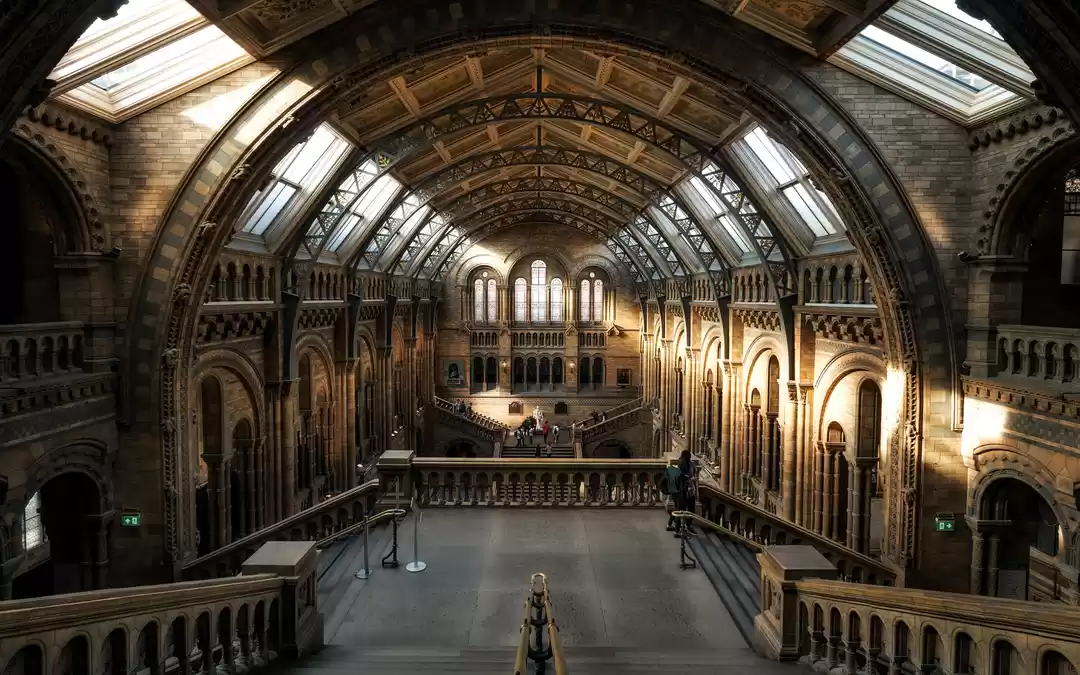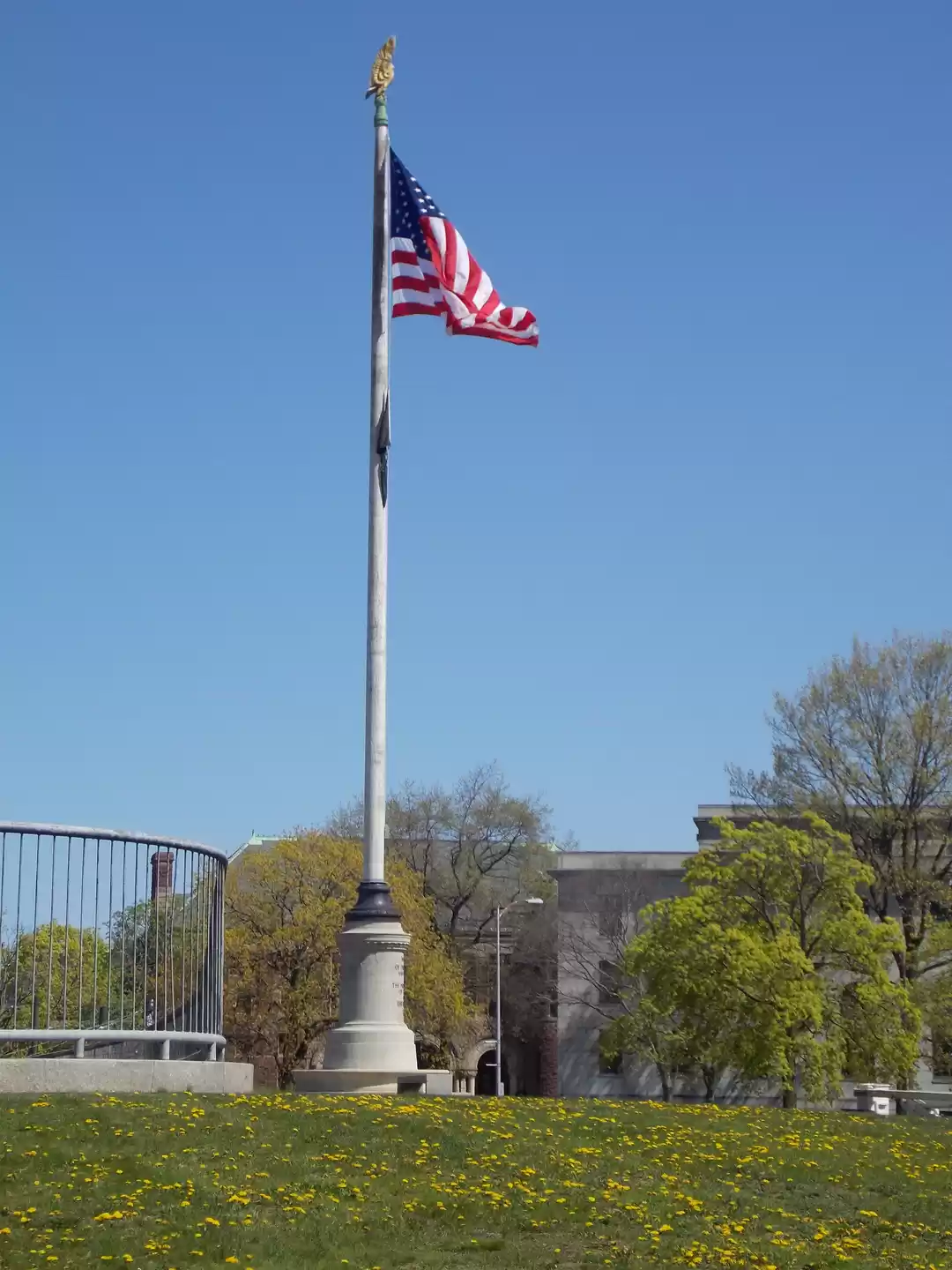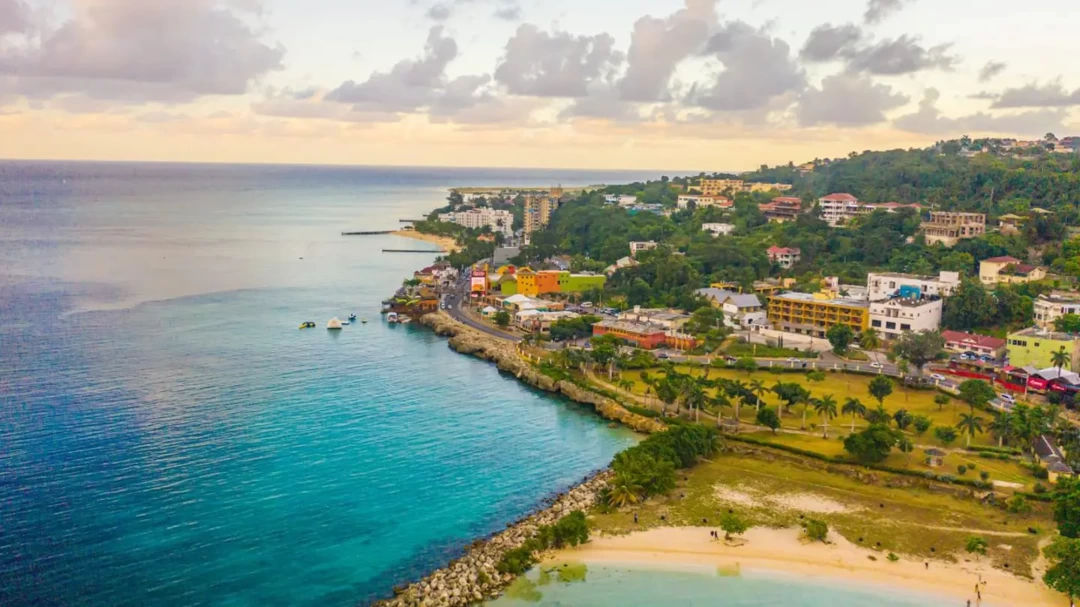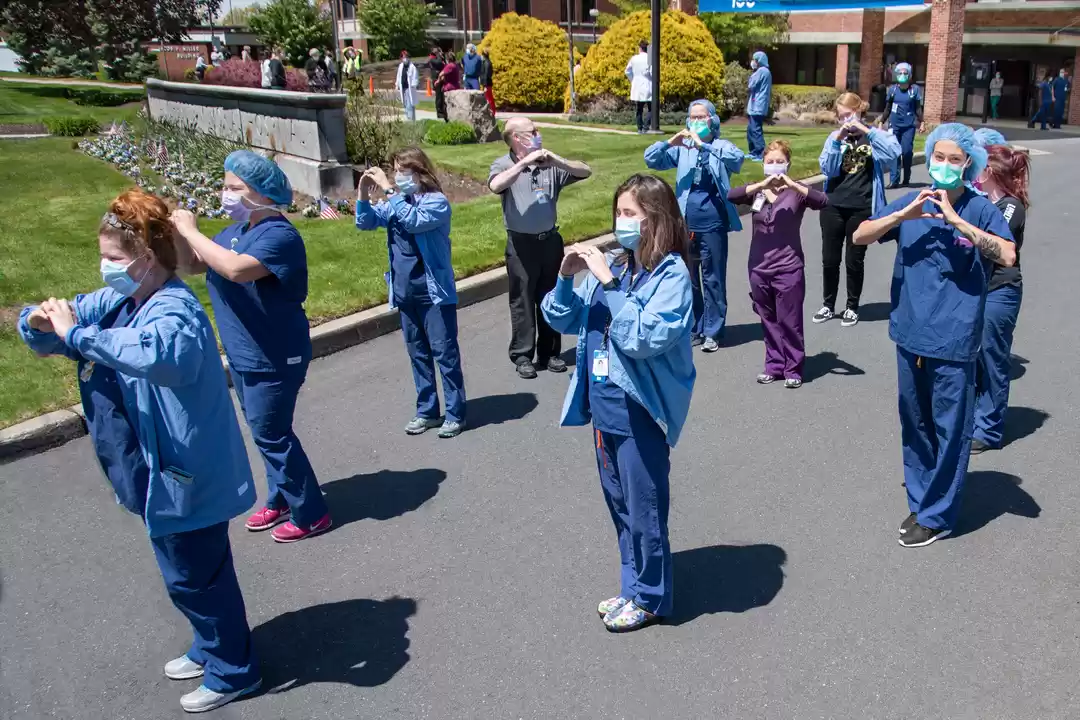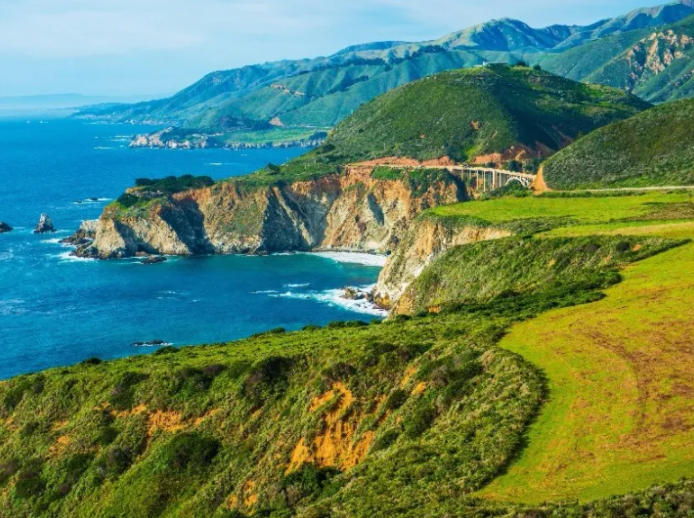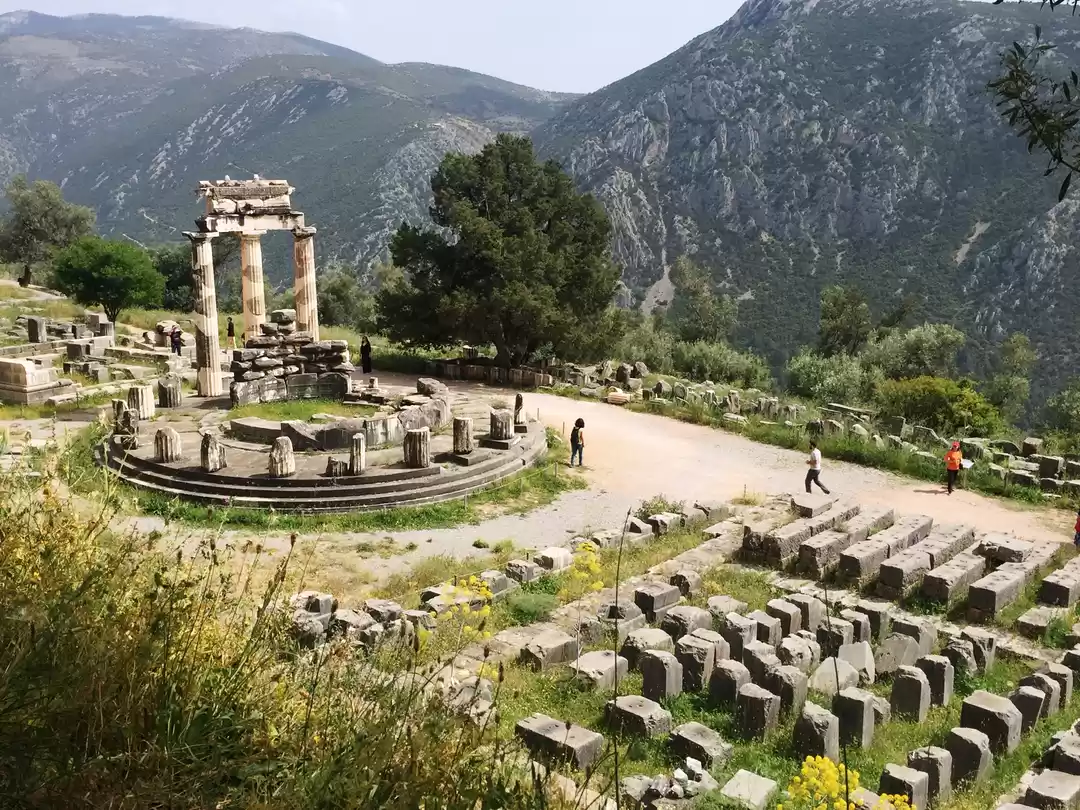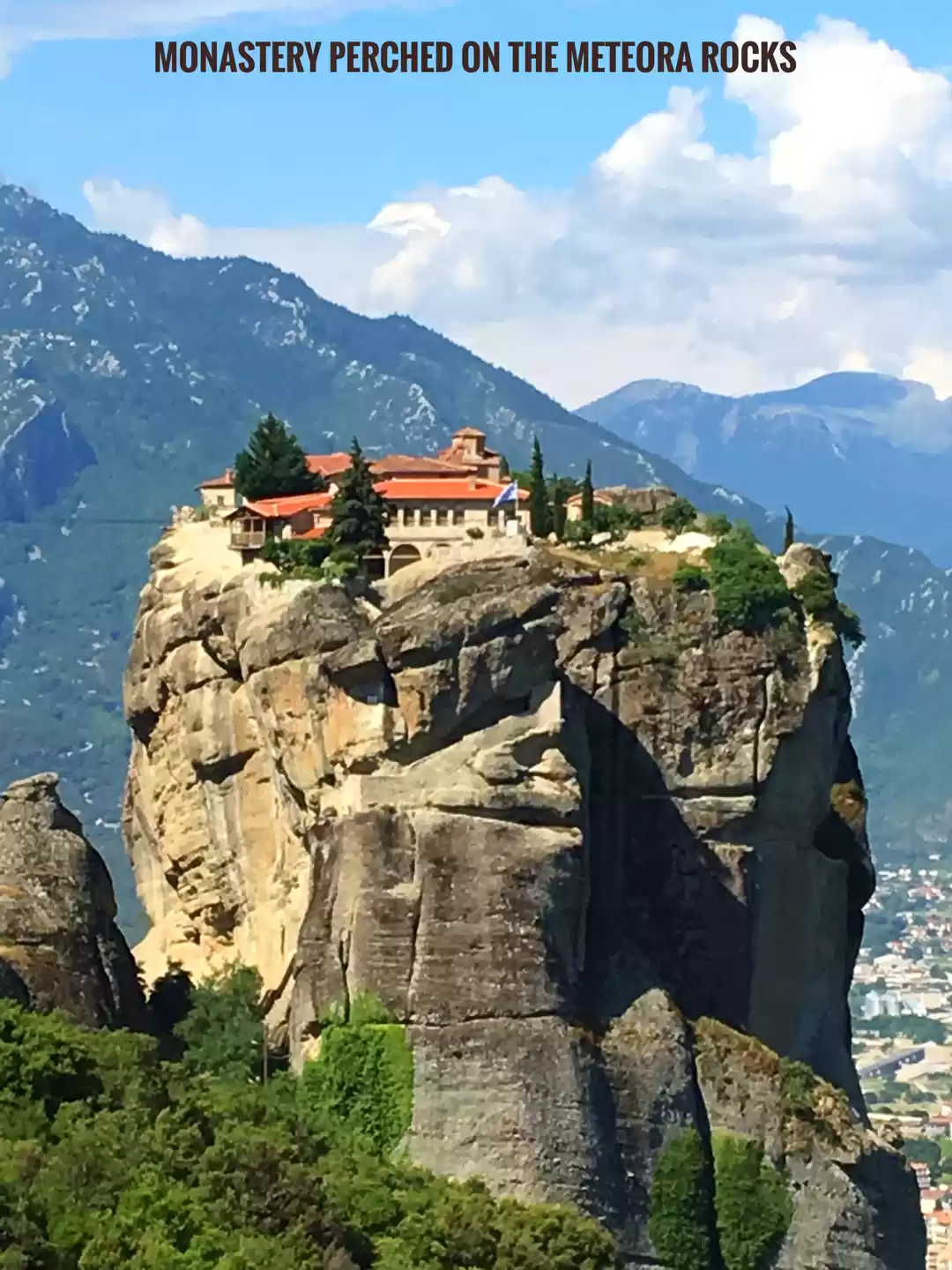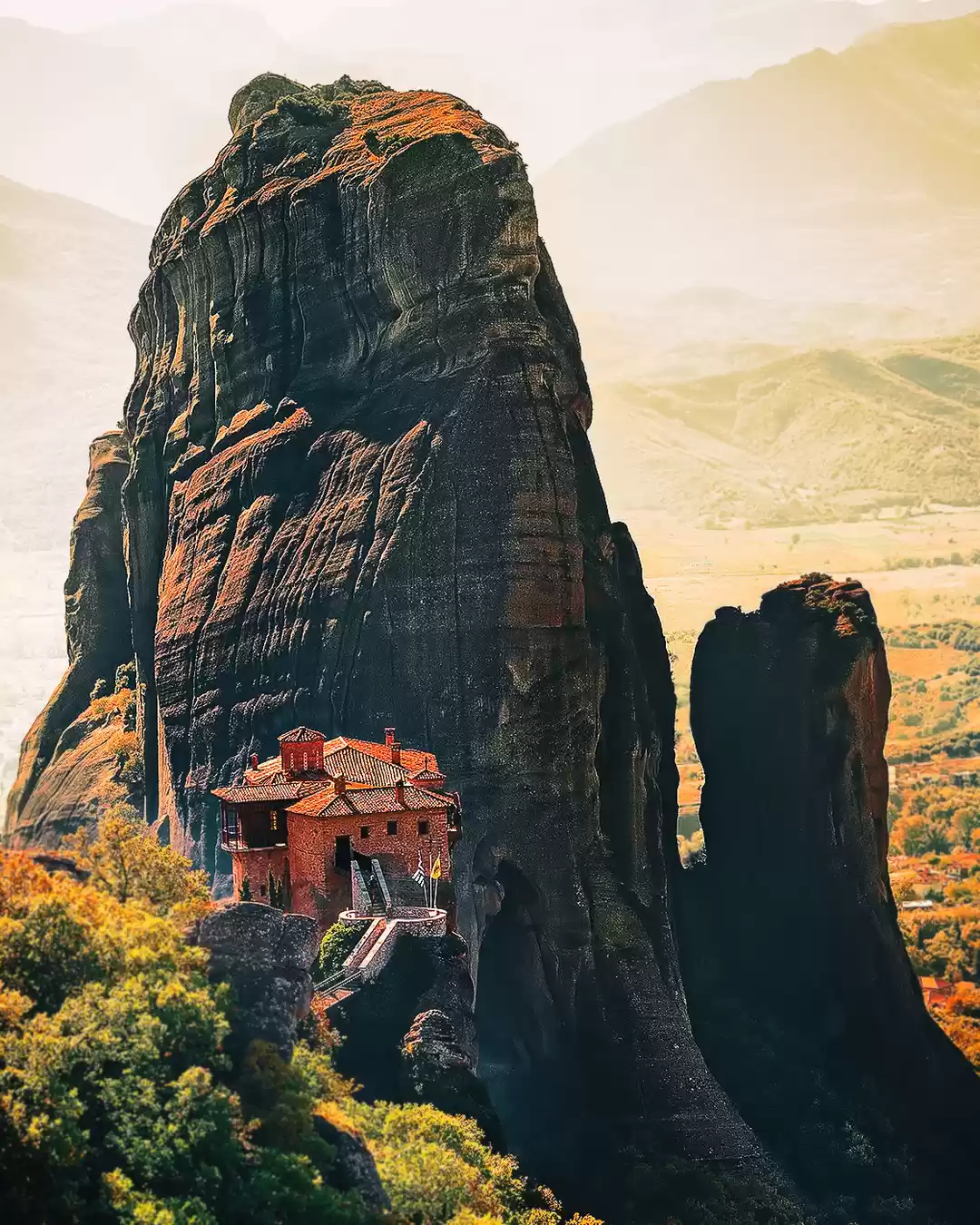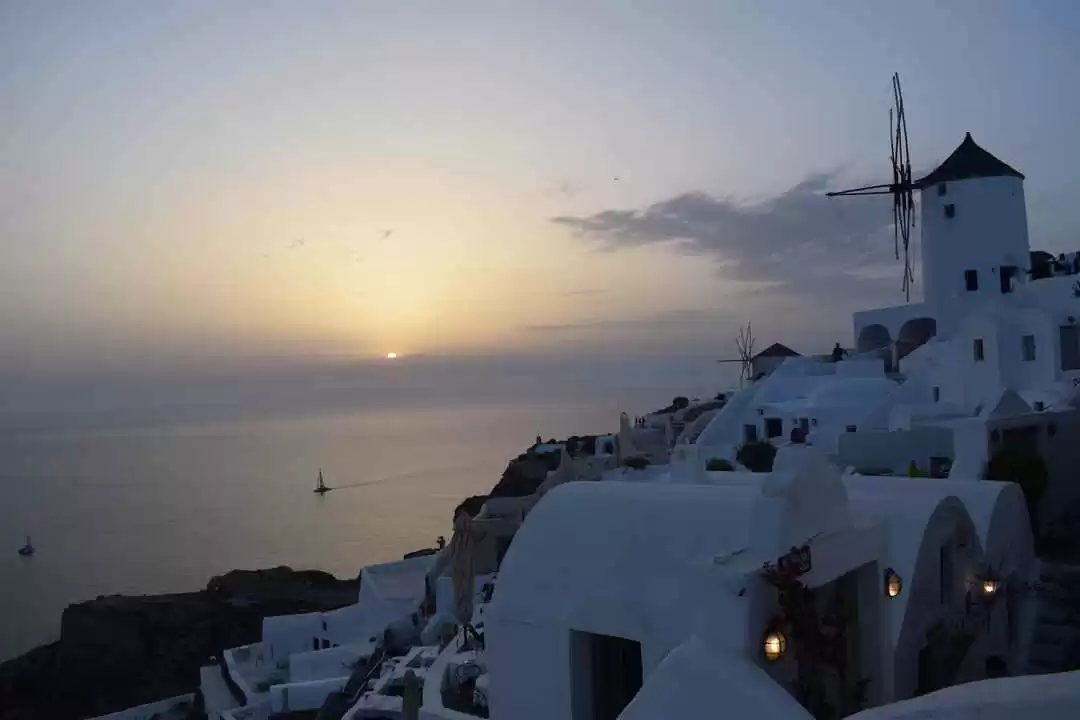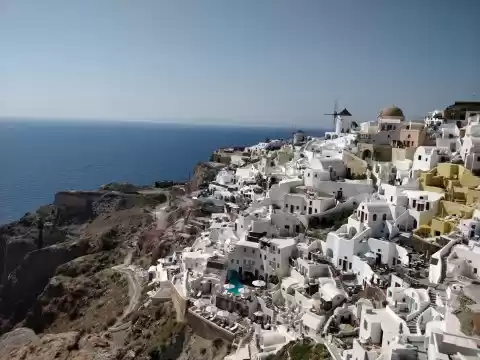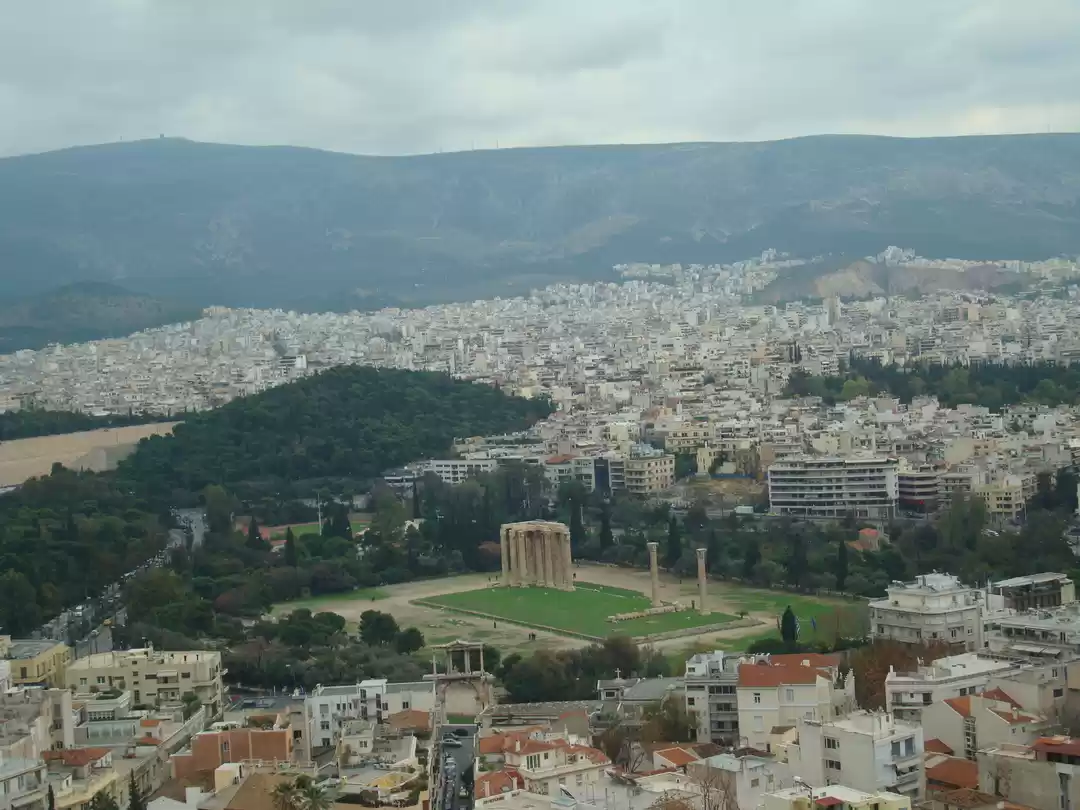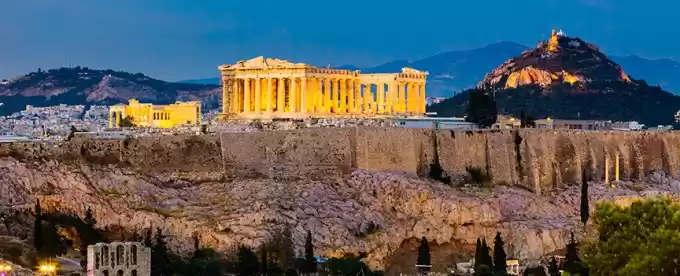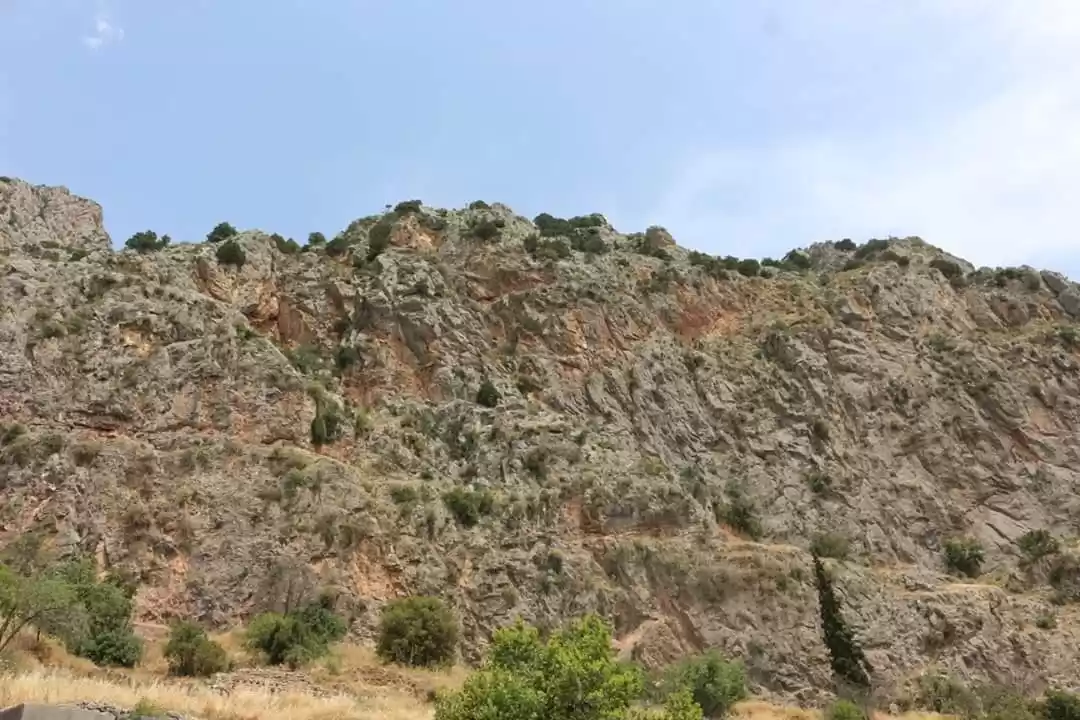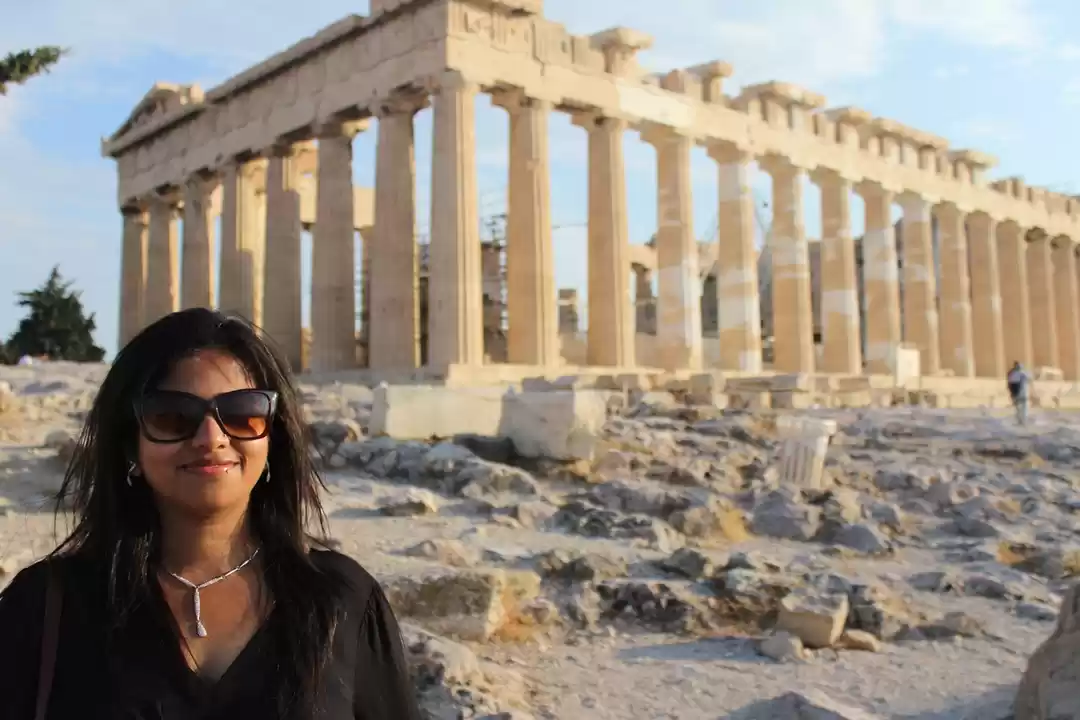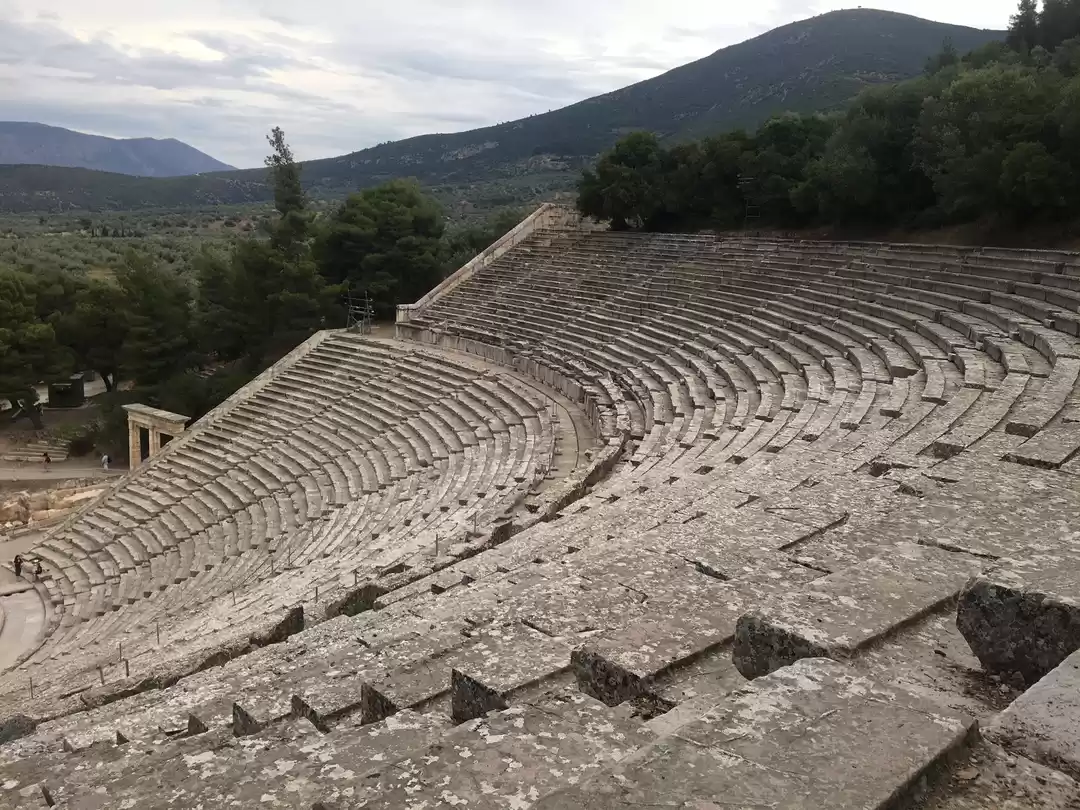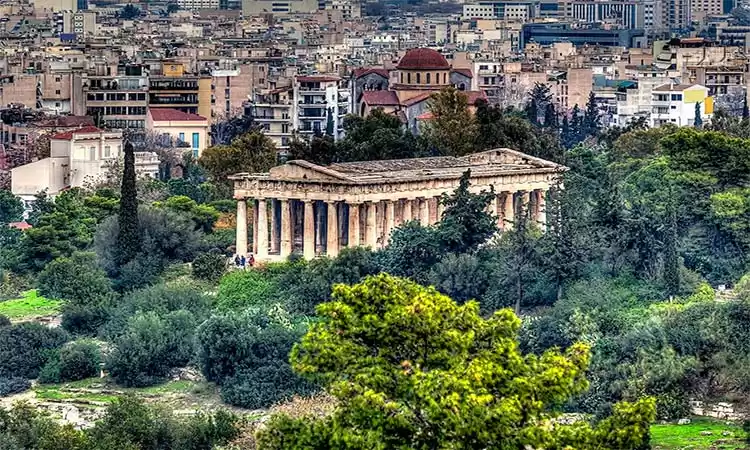
The 4 hour bus journey from Athens begins to get interesting only as it tails off towards its end, that’s when the hills make a first appearance, still a mere suggestion on the horizon but a promising one. And as we get near, the narrow winding road doesn't begin the climb straight off, it curls its way to the belly of the valley, like a mystery writer taking you deep within the story, wary of revealing the plot, keeping the big picture hidden out of sight. And then the slow and labored ascent begins. The bus, losing its momentum and breath, stretches towards its apogee, a distant town just below the peaks, revealed to us in glimpses, immeasurably beautiful. That is the sleepy little town of Arachova, famous for its wondrous ski slopes. But this is the beginning of summers, the chill may not have totally dissolved yet but the snow has. And that’s when action shifts further down the road. It’s early May and halfway into the valley ahead; Delphi is just waking up from the slumber of winters, like most of touristy Greece.

The whole town is all but two streets which seem to exist more out of a modern-day necessity then slow organic growth of history which this quaint little town is famous for. The older one rises uphill hugging the towering mountain to the east, the Paranassus. It is a single lane which now serves the onward traffic and the more homely side of the town. It then declines into the road a few hundred meters down. The other one crawls downhill, clinging desperately, to the almost vertical cliff and eventually becomes the main road again. On this you would find the few tourists that have trickled in, downing their morning coffee in one of the many cafes.

We chose to get our first taste of Greek coffee at the oddity on the main street, the Telescope Café. There’s a mild chill in the air, a tad too much for our Indian frames, but the bunch of school students out for an architectural tour seem to be least fussed about it. They merrily hog the multiple telescopes placed in the patio of the café, which looks down the cliff towards the valley and the harbor town of Itea. We get curious. Yes the telescopes did come first, the name followed. Even without the telescopes, the beautiful hills and the Gulf of Corinth in the distance are enough to take your breath away. “It snowed last night”, says Tom, our barista and the proud owner of the café. He has kind but melancholy eyes. “Not here, up there on Paranassus”. There is a certain quality to the way he says Paranassus, as if it were a person.
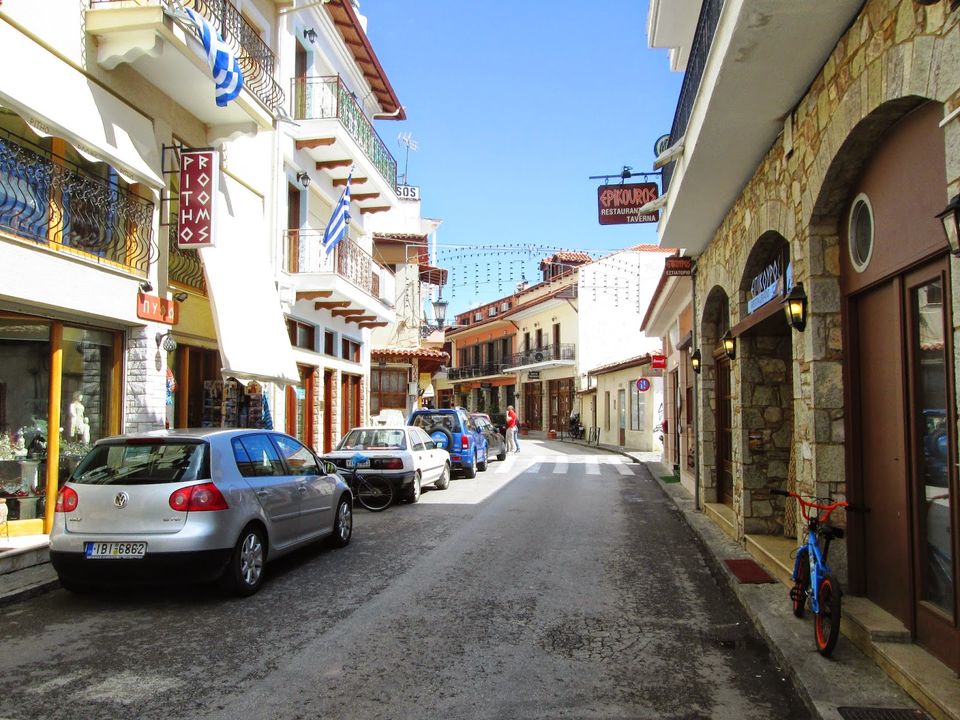
Centuries ago, it was Paranassus, the very heart of which was carved out by ancient Greeks to sculpt Delphi (or Pytho as it was known in those days). It was a city dedicated to Apollo himself (as the myth goes) and marked by Zeus, god of all things, as the center of the earth. Its trademark amphitheater played host to the Pythian Games, one of the four PanHellenic games that the modern day Olympics are born out of. It is this amphitheater that is first to emerge as you turn the corner on the main road. The sanctuary is made up of buildings set on terraces in tiers. A curling path crawls up the tiers right up to the temple, the stadia and the amphitheater. Along the way are numerous statues and buildings of varying purposes and importance. Such is the incline of the Paranassus, that the all the buildings are almost distinctly visible from the road at the bottom.

The first buildings of importance you encounter as you make your way up are the many treasuries of the Greek City states, including Greek territories in the Seas. Used to store the bounty the states would dedicate to Apollo, five of the many treasuries have been distinctly identified. The city states would dedicate a part of the battle spoils after each battle, typically a tenth (a tithe) of their plunder. Only the Athenian Treasury survived neglect and vagaries of nature and has been reconstructed almost fully. Many other buildings dot the path as you rise further to reach the temple of Apollo. The most important building of the set, the temple of Apollo was reinvented many times, constructed thrice in the 7th, 6th and 4th Century BC, before finally being destroyed in 392 AD.
One truly needs to climb halfway up this towering hill to the highest site in the sanctuary, the amphitheater, to even begin to imagine what a wondrous spectacle Delphi would have been. The Pythian Games, whose rise and fall was synonymous with that of the city, would showcase the glory of this sanctuary to all who came to bear witness. And, as if particularly to flaunt it, the amphitheater was designed to enable exactly that. The Koilon or the seating gallery not only offered a spectacular view of the Scena or the stage, but further down of the entire sanctuary of Delphi and even further of the valley of Delphi in its entirety and vastness. It was a view designed with a single purpose: to inspire awe. It does.
Such was the pre-eminence of Delphi and the Delphic Oracle that everyone from Kings to commoners would consult her, an anomalous religious and social female leader in a predominantly male society, for matters ranging from Law to Crime to Philosophy. It is said that it was the Delphic Oracle who set Socrates on his quest for knowledge by proclaiming his wisdom. But like all mighty cities of the past Delphi also fell prey to the rise of a belief system contrary to its creators. While Christianity continued its determined march through central and Eastern Europe, Theodosius I, lay waste to the temple to silence the iconic Oracle of Delphi for eternity. And Christians pillaged all of the remaining sites in a quest to wipe “Paganism”, leaving behind only ruins which stand to tell a broken story.
If you are a student of archaeology or a historian you could spend a lifetime reading that story in these ruins although most tourist resources and guides on Delphi term it a weekend trip, sometimes even a day trip from Athens. But if you are a traveler, give yourselves some time. Because time slows down when you enter this lovely town and the ease and calm of contentment takes over. As the night falls, the streets light up with sparkle, in a quiet beauty. Cafes advertise their Mediterranean flavors and lull you in with soft tunes of Greek music. Those valley-side patios offer a view filled with the eternal promise of distant lands and awaiting adventures that mesmerize every traveler. Itea is mere sparkle in the utter darkness of Pindus mountain range. And as you curl in on the couchettes, with a bracing cup of coffee and a book, the cozy warmth of the fireplace keeping away the mild chill; time, finally, comes to a complete standstill.
Getting to Delphi
Athens: The easiest and cheapest way is to catch one of the 6 buses that leave Athens daily from Bus Terminal B near the PRAKTORIA bus stop in Athens for Euro 15 a side.
Across Greece: The coastal town of Itea has regular buses from other towns across Greece from where a shuttle would leave you in Delphi in no time
Recommended: If you are the kinds, most global car rental companies have offices at the Athens airport and very reasonable rates. Fuel costs vary but remain below Euro 2 per liter and if you have plans to travel on to other destinations like Patras or Meteora, having a car makes your life much (MUCH) easier given that alternatives include multiple bus / train changes.
Get Out: As said before Delphi is very fulfilling if you are a traveller. Day trips or even overnighters to Arachova in its summary colourfulness will be worth the effort and time. If the valley views from Delphi are grand, ones from Arachova are nothing short of spectacular. And if you’re headed to Patra, consider stopping by at Itea for the warmth of the Corinthian Gulf enjoyed with a fresh cooler.
Eat: Telescope Café is a must visit. The kind owner fresh baked us a whole vegetarian pizza and insisted we only pay for the two slices my wife purchased. A bakery on the inner street opens early and has excellent cheap breakfast. Delphi is a small town, best is to walk around and check out the menus for what catches your fancy.
Sleep: Pan hotel, valley view rooms. It’s economical, lovely host and adequate rooms.
Best Time: Winters if you like Skiing and love sheer scintillating whiteness, summers if you are of a fragile construction like me.
Buy: Fresh Olives. The region is obviously famous for them. Reach out to the owner of Telescope Café, his grandfather’s hand-grown 100% organic olives were plain divine.


